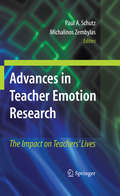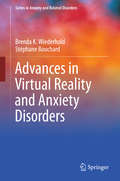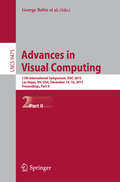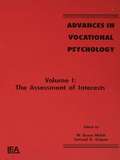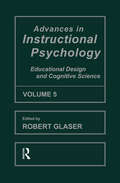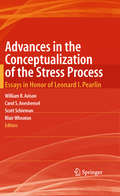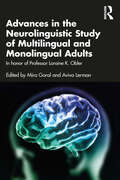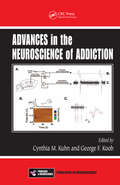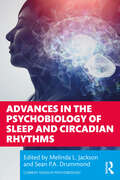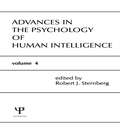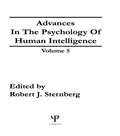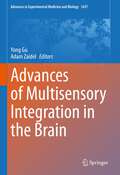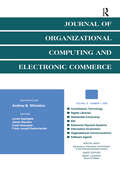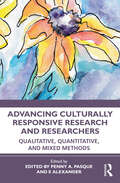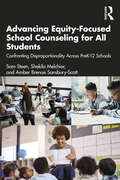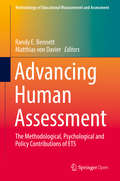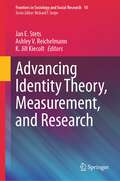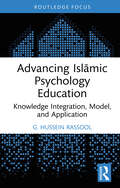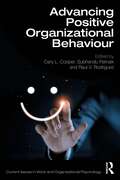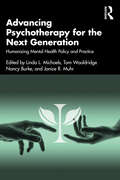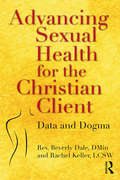- Table View
- List View
Advances in Teacher Emotion Research: The Impact on Teachers' Lives
by Michalinos Zembylas Paul A. SchutzSome reports estimate that nearly 50% of teachers entering the profession leave within the first five years (Alliance for Excellent Education 2004; Ingersoll, 2003; Quality Counts 2000). One explanation of why teachers leave the profession so early in their career might be related to the emotional nature of the teaching profession. For example, teaching is an occupation that involves considerable emotional labor. Emotional labor involves the effort, planning, and control teachers need to express organizationally desired emotions during interpersonal transactions. As such, emotional labor has been associated with job dissatisfaction, health symptoms and emotional exhaustion, which are key components of burnout and related to teachers who drop out of the profession. Research into emotional labor in teaching and other aspects of teachers' emotions is becoming increasingly important not only because of the growing number of teachers leaving the profession, but also because unpleasant classroom emotions have considerable implications for student learning, school climate and the quality of education in general. Using a variety of different methodological and theoretical approaches, the authors in this edited volume, Advances in Teacher Emotion Research: The Impact on Teachers' Lives, provide a systematic overview that enriches our understanding of the role of emotions in teachers' professional lives and work. More specifically, the authors discuss inquiry related to teachers' emotions in educational reform, teacher identity, student involvement, race/class/gender issues, school administration and inspection, emotional labor, teacher burnout and several other related issues. This volume, then, represents the accumulation of different epistemological and theoretical positions related to inquiry on teachers' emotions, acknowledging that emotions are core components of teachers' lives. Advances in Teacher Emotion Research takes an eclectic look at teacher emotions, presenting current research from diverse perspectives, thereby making this volume a significant contribution to the field.
Advances in Virtual Reality and Anxiety Disorders (Series in Anxiety and Related Disorders)
by Brenda K. Wiederhold Stéphane BouchardThe interactive computer-generated world of virtual reality has been successful in treating phobias and other anxiety-related conditions, in part because of its distinct advantages over traditional in vivo exposure. Yet many clinicians still think of VR technology as it was in the 1990s-bulky, costly, technically difficult-with little knowledge of its evolution toward more modern, evidence-based, practice-friendly treatment. These updates, and their clinical usefulness, are the subject of Advances in Virtual Reality and Anxiety Disorders, a timely guidebook geared toward integrating up-to-date VR methods into everyday practice. Introductory material covers key virtual reality concepts, provides a brief history of VR as used in therapy for anxiety disorders, addresses the concept of presence, and explains the side effects, known as cybersickness, that affect a small percentage of clients. Chapters in the book's main section detail current techniques and review study findings for using VR in the treatment of: · Claustrophobia. · Panic disorder, agoraphobia, and driving phobia. · Acrophobia and aviophobia. · Arachnophobia. · Social phobia. · Generalized anxiety disorder and OCD. · PTSD. · Plus clinical guidelines for establishing a VR clinic. An in-depth framework for effective (and cost-effective) therapeutic innovations for entrenched problems, Advances in Virtual Reality and Anxiety Disorders will find an engaged audience among psychologists, psychiatrists, social workers, and mental health counselors. eractive
Advances in Visual Computing: 11th International Symposium, ISVC 2015, Las Vegas, NV, USA, December 14-16, 2015, Proceedings, Part II (Lecture Notes in Computer Science #9475)
by Tim Mcgraw George Bebis Richard Boyle Bahram Parvin Darko Koracin Ioannis Pavlidis Rogerio Feris Mark Elendt Regis Kopper Eric Ragan Zhao Ye Gunther WeberThe two volume set LNCS 9474 and LNCS 9475 constitutesthe refereed proceedings of the 11th International Symposium on VisualComputing, ISVC 2015, held in Las Vegas, NV, USA in December 2015. The 115 revised full papers and 35 poster paperspresented in this book were carefully reviewed and selected from 260submissions. The papers are organized in topical sections: Part I (LNCS 9474)comprises computational bioimaging; computer graphics; motion and tracking;segmentation; recognition; visualization; mapping; modeling and surfacereconstruction; advancing autonomy for aerial robotics; medical imaging;virtual reality; observing humans; spectral imaging and processing; intelligenttransportation systems; visual perception and robotic systems. Part II (LNCS9475): applications; 3D computer vision; computer graphics; segmentation;biometrics; pattern recognition; recognition; and virtual reality.
Advances in Vocational Psychology: Volume 1: the Assessment of interests (Contemporary Topics in Vocational Psychology Series)
by W. Bruce Walsh, Samuel H. OsipowAdvances in Vocational Psychology devoted to presenting and evaluating important advances in the field of interest measurement. Progress in three well known interest inventories -- the Strong Campbell Interest Inventory, the Kuder Occupational Interest Survey, and the Self Directed Search -- is closely examined. A focus on innovations in interest measurement directs attention to how more recent instruments provide technical and conceptual advances over older, more reliable ones. Both research and counseling perspectives combine to provide a well-balanced guide to the study of vocational psychology. How interest inventories can be used beneficially in the career counseling of minority and majority populations is also explored.
Advances in instructional Psychology, Volume 5: Educational Design and Cognitive Science (Advances In Instructional Psychology Ser.)
by Robert GlaserInvestigators have moved back and forth between design efforts and basic studies in cognition to improve both application and fundamental knowledge. This volume's theme is this interaction between practice and science with the opportunity for reflecting on findings in order to understand them and suggesting improved forms of application and their underlying explanation. This is seen in various arenas including theory-based computer-assisted instruction for teaching mathematics, the design of communities of learning in elementary schools, teaching in the context of problem-solving situations and reasoning with models, self-explanation as a highly effective learning activity, conceptual change in medical training and health education, and workplace training in electronic troubleshooting. The results of extensive long-term experience and analysis in each of these areas are insightfully reported by the well-known contributors to this volume. Special features of this fifth edition include: * The work of eminent cognitive scientists in the design and evaluation of educational and training environments to increase current understanding of learning and development, as this understanding is applied to innovative instructional programs and teaching methods. * A description of learning theory and principles as well as implications and examples on research and development on educational application. * A presentation on the 10-year change in perspective on research and development in problem solving environments that invite inquiry about academic information and skills in the context of instruction of elementary school children. * An innovative approach to math and science instruction in which teaching is oriented around constructing, evaluating, and revising models. * An examination of the process of self-explaining, which involves explaining to one's self in an attempt to make sense of a new situation. * A description of a long-term program of cognitive task analysis and instructional design on problem solving in the operation of complex equipment. * An investigation on the acquisition of clinical reasoning skills and the understanding of biomedical concepts in both professional medicine and the health practices of the lay population.
Advances in the Conceptualization of the Stress Process: Essays in Honor of Leonard I. Pearlin
by William R. Avison Scott Schieman Blair Wheaton Carol S. AneshenselThe stress process paradigm has been one of the most dominant conceptual models of health and illness over the past three decades. The contributions to this volume chart a new course for the stress process, extending the paradigm conceptually, methodologically, and substantively. Written in honor of Leonard I. Pearlin, the leading proponent of the stress process, the contributions to this volume provide a new direction for stress process research. Featuring contributions from leading researchers, and an afterword by Leonard I. Pearlin, this comprehensive volume covers three major sections: -Conceptual and methodological extensions of the stress process -The roles of family and work in the stress process, throughout the life course - Psychosocial factors that impact health outcomes. This volume will be an invaluable resource for researchers in sociology, social psychology and public health, all seeking to understand the pervasive role of stress on social disparities in health and illness.
Advances in the Neurolinguistic Study of Multilingual and Monolingual Adults: In honor of Professor Loraine K. Obler (Psychology Press Festschrift Series)
by Aviva LermanThis edited volume examines current themes in the neurolinguistic study of multilingual and monolingual adults and highlights several new directions the field is moving toward. The organization of the book is as follows. Part I focuses on language processing in multilingual and monolingual adults, Part II explores language processing in multilingual and monolingual adults with dementia, and Part III centers on language processing in multilingual and monolingual adults with stroke-induced aphasia. Chapters feature empirical data and/or literature reviews, discussing the key issues in the field that are currently engaging scholars and practitioners with topics including language attrition, cognitive flexibility, aging and the brain, eye-tracking studies of aphasia, translanguaging, and multilingualism in dementia. The book includes cuttingedge research from researchers and practitioners who are all alumni and colleagues of Professor Loraine K. Obler, to whom this book is dedicated. Presenting crucial topics in the field, the book is highly relevant for students, researchers, and practitioners in the fields of neurolinguistics, psycholinguistics, sociolinguistics, applied linguistics, and language disorders.
Advances in the Neuroscience of Addiction (Frontiers in Neuroscience)
by George F. Koob Cynthia M. KuhnUnderstanding the phenomenon of long-lasting vulnerability to addiction is essential to developing successful treatments. Written by an international team of authorities in their respective fields, Advances in the Neuroscience of Addiction provides an excellent overview of the available and emerging approaches used to investigate the biologic mechanisms of drug addiction. It also delineates the promising research discoveries being made in relapse prevention.The book begins with current animal models of addiction, which mimic the state of humans entering treatment: recently-abstinent animals that receive common triggers for relapse (classical conditioning, stress, and neuroadaptive dysregulation). Coverage then shifts to the use of electrophysiologic approaches, which enable researchers to characterize the discharge patterns of single neurons during drug self-administration. After exploring advances in voltammetry and enzyme-linked biosensors for measuring glutamate, the book discusses the theoretical background and results of neuroimaging studies related to neuronal networks that are activated by drug-specific cues. It then describes modern genetic approaches to manipulate target proteins that influence addictive behavior.The book rounds out its coverage by illustrating how a neuroeconomic approach can inform studies of reward processing in general and addiction in particular. It is a comprehensive introduction to the methodologies of the field for students and beginning researchers and an essential reference source for established investigators.
Advances in the Psychobiology of Sleep and Circadian Rhythms (Current Issues in Psychobiology)
by Melinda L. Jackson Sean P.A. DrummondAdvances in the Psychobiology of Sleep and Circadian Rhythms features international experts from the fields of psychobiology, sleep research and chronobiology to address and review cutting-edge scientific literature concerning recent advances in the psychobiology of sleep, sleep disorders, such as sleep apnoea and insomnia, and circadian rhythms, across the lifespan. In this illuminating volume, Melinda L. Jackson and Sean P.A. Drummond bring together leading international researchers to review cross-cutting issues in the field, including sleep and pain, sleep and dementia risk, and sleep issues in paediatric populations as well as the interaction between sleep and health conditions in different populations. The chapters offer coverage of the major explanatory models which underpin the empirical work as well as a discussion of the relevant theoretical and conceptual models on issues arising with specific psychiatric and medical disorders, including depression, dementia, posttraumatic stress disorder and pain. They also address new research in the area of chronobiology, and circadian impacts on health and diseases. The chapters also discuss important methodological and ethical issues arising in research and include sections addressing implications for public policy and practitioner interventions in the context of different social and cultural environments. This volume will be a crucial resource for professionals, practitioners and researchers engaged in the field as well as for postgraduate and upper-level undergraduate students undertaking research in areas related to psychobiology, neuropsychology, health psychology and other disciplines such as biology, physiology and psychopharmacology.
Advances in the Psychology of Human Intelligence: Volume 4
by Robert J. SternbergFirst published in 1987. Routledge is an imprint of Taylor & Francis, an informa company.
Advances in the Psychology of Human Intelligence: Volume 5
by Robert J. SternbergVolume five continues to mark the significant advances made in the psychology of human intelligence, problem solving, and thinking abilities. Papers contributed by leaders in the field reflect a diversity of perspectives and approaches to the human intelligence. Subjects discussed include: * genetic and environmental contributions to information-processing abilities * development of children's conceptions of intelligence * skill acquisition as a bridge between intelligence and motivation * information-processing abilities underlying intelligence * costs of expertise and their relation to intelligence * the nature of abstract thought
Advances of Multisensory Integration in the Brain (Advances in Experimental Medicine and Biology #1437)
by Yong Gu Adam ZaidelThis book presents the latest research on multisensory brain function. Namely, the mechanisms by which the brain processes and integrates information from multiple sensory modalities. Its contents cover a broad range of topics, including optimal integration, cross-modal interactions, calibration, and causal inference – with an emphasis on their neuronal underpinnings. By bringing together efforts from different laboratories around the world we aim to collaboratively shed light on these fundamental brain processes, that underlie perception, cognition, and behavior in a complex multisensory world, and to spur innovation of brain-inspired technologies
Advances on information Technologies in the Financial Services industry: A Special Issue of the journal of Organizational Computing and Electronic Commerce
by Bruce W. Weber Robert J. KauffmanThe financial services industry is changing under the stimulus of advances in information technology (IT), telecommunications, and the Internet. Technological innovations and growing customer demand and sophistication have led to the emergence of new electronic financial markets, organizational forms for financial services firms, products, and product delivery capabilities. This special issue highlights Information Systems (IS) research on management topics in the financial services that involve IT. The authors utilize a mix of research methodologies to examine a range of innovative applications of IT in the financial services industry.
Advancing Culturally Responsive Research and Researchers: Qualitative, Quantitative, and Mixed Methods
by Penny A. PasqueAdvancing Culturally Responsive Research and Researchers: Qualitative, Quantitative, and Mixed Methods encourages readers to design and engage in methodologies and methods that place cultural relevancy at the center of inquiry. In doing so, it highlights the need to uplift voices and needs of people who have been historically marginalized in the environments that we both inhabit and engage in as part of knowledge construction. The scholars whose work is featured in this volume take up research from different paradigmatic, ontological, epistemological, axiological, and methodological approaches – yet, with adherence to centering cultural responsiveness in all research decisions. Each chapter seeks to extend understandings of social inequities, methodologies, and/or methods – and to contribute to meaningful and evolving social change through innovative and cutting-edge research strategies. While doing this work, the authors illustrate and highlight the importance of researcher positions and reflexivity in supporting the expansion of culturally responsive approaches; they also do so while considering global sociopolitical conditions of this moment in time. The contributions to this volume were initially presented at the first biennial Advanced Methods Institute in 2021. The Institute was hosted by QualLab in The Ohio State University’s College of Education and Human Ecology and shared this volume’s thematic focus. As a handbook, the volume can help faculty and advanced researchers with interest in doing culturally responsive projects to better understand frameworks, approaches, and considerations for doing so. It includes activities to support readers in developing said understandings.
Advancing Developmental Science: Philosophy, Theory, and Method
by Ulrich Müller Anthony S. DickDevelopmental science is an interdisciplinary scientific field dedicated to describing, understanding, and explaining change in behavior across the lifespan and the psychological, environmental, and biological processes that co-determine this change during the organism’s development. Developmental science is thus a broad discipline that lies at the intersection of psychology, biology, sociology, anthropology and other allied disciplines. Advancing Developmental Science: Philosophy, Theory, and Method reflects this broad view of developmental science, and reviews the philosophical, theoretical, and methodological issues facing the field. It does so within the Process-Relational paradigm, as described by developmentalist Willis Overton over the course of his career. Within that framework, this book explores development in a number of specific cognitive, neurobiological, and social domains, and provides students and researchers with a comprehensive suite of conceptual and methodological tools to describe, explain, and optimize intraindividual change across the lifespan.
Advancing Equity-Focused School Counseling for All Students: Confronting Disproportionality Across PreK-12 Schools
by Sam Steen Shekila Melchior Amber Brenae Sansbury-ScottUsing author narratives, this book brings attention to racial disparities that currently exist in schools within the historical context of pivotal legal cases in America while emphasizing the importance of assessing and supporting students through a culturally appropriate lens that recognizes student strengths. The authors provide current and historical frameworks through which school counselors can develop a more socially just and liberation-orientated school counseling program. These frameworks center and unveil the ways in which social rank, segregation, and racism influence development, particularly for Black and Brown children. The book underscores the value of community partnerships and the role of strategic partnerships to support a college culture, particularly for student populations with historically limited access to higher education. Readers will also learn about misconceptions of racially and ethnically minoritized children and the related impacts on misdiagnosis and overrepresentation in special education. School counselors looking to ensure equity and social justice within their classrooms, analyze their own privilege, and support students of all backgrounds will find this timely text indispensable in creating a program that fosters understanding and growth.
Advancing Grounded Theory with Mixed Methods
by Elizabeth G. CreamerThis groundbreaking book introduces an innovative new perspective on mixed method grounded theory methodology (MM-GTM) by conceptualizing it holistically as a distinct, qualitatively driven methodology that appreciates the integrity of each of the methods it embraces. This practical and accessible text advocates for using MM-GTM in a way that promote meaningful interaction between qualitative and quantitative data during analysis. Its principal contribution is to provide a set of research tools to develop or refine a multi-faceted analytical framework in applied fields in the social and behavioral sciences, including nursing. Used as either a resource or a textbook in a survey course about research methods, the text references dozens of examples about how a dialectical exchange between different sources of data can be built into core grounded theory procedures, including theoretical sampling, coding, case-based memoing, and integrated visual displays. With a whole chapter devoted to reporting, the book also considers the way that indexes of quality that extend beyond methodological transparency can be used to evaluate research that partners mixed methods with grounded theory and other qualitative methods. Featuring student-friendly pedagogy throughout, including self-assessment questions, a glossary, and a framework that summarizes key points, this text is an essential read for all research methods students or early career researchers ambitious to develop a theoretical perspective with qualitative, mixed methods, or evaluation.
Advancing Human Assessment: The Methodological, Psychological and Policy Contributions of ETS (Methodology of Educational Measurement and Assessment)
by Matthias Von Davier Randy E. BennettThis book is open access under a CC BY-NC 2. 5 license. This book describes the extensive contributions made toward the advancement of human assessment by scientists from one of the world's leading research institutions, Educational Testing Service. The book's four major sections detail research and development in measurement and statistics, education policy analysis and evaluation, scientific psychology, and validity. Many of the developments presented have become de-facto standards in educational and psychological measurement, including in item response theory (IRT), linking and equating, differential item functioning (DIF), and educational surveys like the National Assessment of Educational Progress (NAEP), the Programme of international Student Assessment (PISA), the Progress of International Reading Literacy Study (PIRLS) and the Trends in Mathematics and Science Study (TIMSS). In addition to its comprehensive coverage of contributions to the theory and methodology of educational and psychological measurement and statistics, the book gives significant attention to ETS work in cognitive, personality, developmental, and social psychology, and to education policy analysis and program evaluation. The chapter authors are long-standing experts who provide broad coverage and thoughtful insights that build upon decades of experience in research and best practices for measurement, evaluation, scientific psychology, and education policy analysis. Opening with a chapter on the genesis of ETS and closing with a synthesis of the enormously diverse set of contributions made over its 70-year history, the book is a useful resource for all interested in the improvement of human assessment.
Advancing Identity Theory, Measurement, and Research (Frontiers in Sociology and Social Research #10)
by Jan E. Stets Ashley V. Reichelmann K. Jill KiecoltThis volume presents recent advances in identity theory, which is a prominent and active theory in sociological social psychology and a versatile framework for explaining the sources of identities, how they develop, how they operate in situations and groups, and how they influence behavior and well-being. The volume is organized around new theoretical developments, measurement techniques, and research in the field. Theoretical developments covered in the volume sharpen, reframe, and expand fundamental concepts in identity theory. State-of-the-art techniques for measuring identities assess, refine, and update existing measures. New research in the volume addresses both individual processes and outcomes and group processes and outcomes. The chapters together showcase the wide applicability of identity theory to a host of identities, such as the religious, gender, sexual, physical attractiveness, racial/ethnic, parent, student, partisan, and group member identities. The volume editors introduce identity theory and provide an overview of the chapters. In the last chapter, they describe how this volume points to future directions for advancing theory, measurement, and research in identity theory. This volume is of interest to a wider readership, including sociological social psychologists, sociologists, and scholars in other disciplines (psychology, political science, economics, education) whose research or teaching deals with identities. Graduate and advanced undergraduate students interested in identity research will also find this book accessible. Finally, this is for discerning laypersons who are interested in how identities influence and shape their lives and affect their well-being.
Advancing Islāmic Psychology Education: Knowledge Integration, Model, and Application (Islamic Psychology and Psychotherapy)
by G. Hussein RassoolThis book provides academic and clinical institutions for developing their educational programmes in psychology, psychotherapy, and counselling from an Islāmic paradigm. Examining the educational approach in the decolonisation of psychology curricula, the book proposes a vertically and horizontally integrated, embedded curriculum model. This model meets the changing needs of practitioners, incorporating indigenous cultural aspects and emerging technologies to reflect new and creative ways of thinking about delivering education in the post Covid-19 era. The chapters also demonstrate how curriculum development, based on the principles of Islamic education, helps institutions to establish purpose, define activities, and guide decision making in educational development. A series of steps for implementing this need-driven educational programme has been suggested. This practical, concise, and evidenced-based text will be a key resource for educators and trainers. It will help them understand how to re-design or suggest changes to curriculum structure, shape, and content in Islāmic psychology, psychotherapy, and counselling for undergraduate, postgraduate and continuing professional development levels of education.
Advancing Natural Language Processing in Educational Assessment
by Matthias Von Davier Victoria YanevaAdvancing Natural Language Processing in Educational Assessment examines the use of natural language technology in educational testing, measurement, and assessment. Recent developments in natural language processing (NLP) have enabled large-scale educational applications, though scholars and professionals may lack a shared understanding of the strengths and limitations of NLP in assessment as well as the challenges that testing organizations face in implementation. This first-of-its-kind book provides evidence-based practices for the use of NLP-based approaches to automated text and speech scoring, language proficiency assessment, technology-assisted item generation, gamification, learner feedback, and beyond. Spanning historical context, validity and fairness issues, emerging technologies, and implications for feedback and personalization, these chapters represent the most robust treatment yet about NLP for education measurement researchers, psychometricians, testing professionals, and policymakers.
Advancing Positive Organizational Behaviour (Current Issues in Work and Organizational Psychology)
by Cary L. Cooper Raul V. Rodriguez Subhendu PatnaikThis comprehensive book provides an overview on the present status of positive organizational behaviour, offering insights on the growing body of research and scholarship, as well as suggestions for future directions in the field. Recent times have seen phenomenal and unprecedented changes in work settings, with many transitioning to hybrid or fully remote arrangements. In addition, unwarranted and unscrupulous application of technology, detrimental ramifications of work stress, and impaired well-being at work are posited to create an unsustainable work environment.Bringing together leading experts from around the world, this collection synthesizes and captures the advancements within the discipline of positive organizational behaviour. It covers such topics as: psychological capital, work engagement interventions, self-efficacy, emotions and positive work behaviour, free will, resilience, work wellbeing, evolutionary psychology and positive workplace, cross-cultural positive organizational behaviour, common-good HRM practices, and methodological advances and challenges in positivity assessments.The book offers a valuable resource for students and scholars of work/organizational psychology, organizational behaviour and applications of positive psychology. It is also a useful reference for organizations looking to understand and implement positive organizational policies in their workplaces.
Advancing Psychotherapy for the Next Generation: Humanizing Mental Health Policy and Practice
by Nancy Burke Tom Wooldridge Linda L. Michaels Janice R. MuhrThis book brings together a global community of mental health professionals to offer an impassioned defence of relationship-based depth psychotherapy. Expressing ideas integral to the mission of the Psychotherapy Action Network (PsiAN), the authors demonstrate a shared vision of a world where this therapy reaches all communities. They articulate the difficulties created by the current mental health diagnostic system and differing conceptualizations of distress, the shortsightedness of evidence-based care and research, and the depreciation of depth therapy by many. The authors thoughtfully elucidate the crucial importance of therapies of depth, insight, and relationship in the repertoire of mental health treatment and speak to the implications of PsiAN’s mission both now and in the future. With a distinguished international group of authors and a clear focus on determining a future direction for psychotherapy, this book is essential reading for all psychotherapists.
Advancing Sexual Health for the Christian Client: Data and Dogma
by Beverly Dale Rachel KellerAdvancing Sexual Health for the Christian Client is an essential toolkit for professionals working at the intersection of Christian belief and sexual health. In this book, Beverly Dale and Rachel Keller deconstruct potentially harmful Christian beliefs around sexuality to support clients stuck in sexual guilt, shame and fear. Combining the experience of an ordained Christian clergy with a certified sexologist, this guide promotes a new approach to sex and faith for therapists, which will help their clients to reconcile a belief in God’s love with sexual knowledge and fulfilment. Grounded in historical and cultural contexts, and drawing from both academic research and scriptural exegesis, the authors offer practical clinical applications and interventions to enable clients to re-examine their sexual beliefs in a way that encourages sexual healing. By understanding the goals of a sex-positive, body-positive Christianity, professionals can find a common language with the person of faith and build an effective therapeutic relationship. This book will be a key point of reference for any sex therapist, educator, or student looking to integrate faith-based concepts into their approach.
Advancing Sexual and Reproductive Health and Rights in Africa: Constraints and Opportunities (ISSN)
by Ebenezer Durojaye Gladys Mirugi-Mukundi Charles NgwenaThis book explores recent developments, constraints and opportunities relating to the advancement of sexual and reproductive health and rights in Africa.Despite many positive developments in relation to sexual and reproductive health in recent years, many Africans still encounter challenges, for instance in poor maternity services, living with HIV, and discrimination on the basis of age, gender, sexual orientation or identity. Covering topics such as abortion, gender identity, adolescent sexuality and homosexuality, the chapters in this book discuss the impact of culture, morality and social beliefs on the enjoyment of sexual and reproductive health and rights across the continent, particularly in relation to vulnerable and marginalized groups. The book also explores the role of litigation, national human rights institutions and regional human rights bodies in advancing the realization of sexual and reproductive health and rights in the region. Throughout, the contributions highlight the relevance of a rights-based framework in addressing topical and contentious issues on sexual and reproductive health and rights within Sub-Saharan Africa.This book will be of interest to researchers of sexuality, civil rights and health in Africa.The Open Access version of this book, available at http://www.taylorfrancis.com/books/e/9781003175049, has been made available under a Creative Commons Attribution-Non Commercial-No Derivatives 4.0 license.
